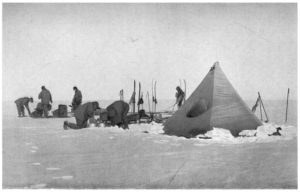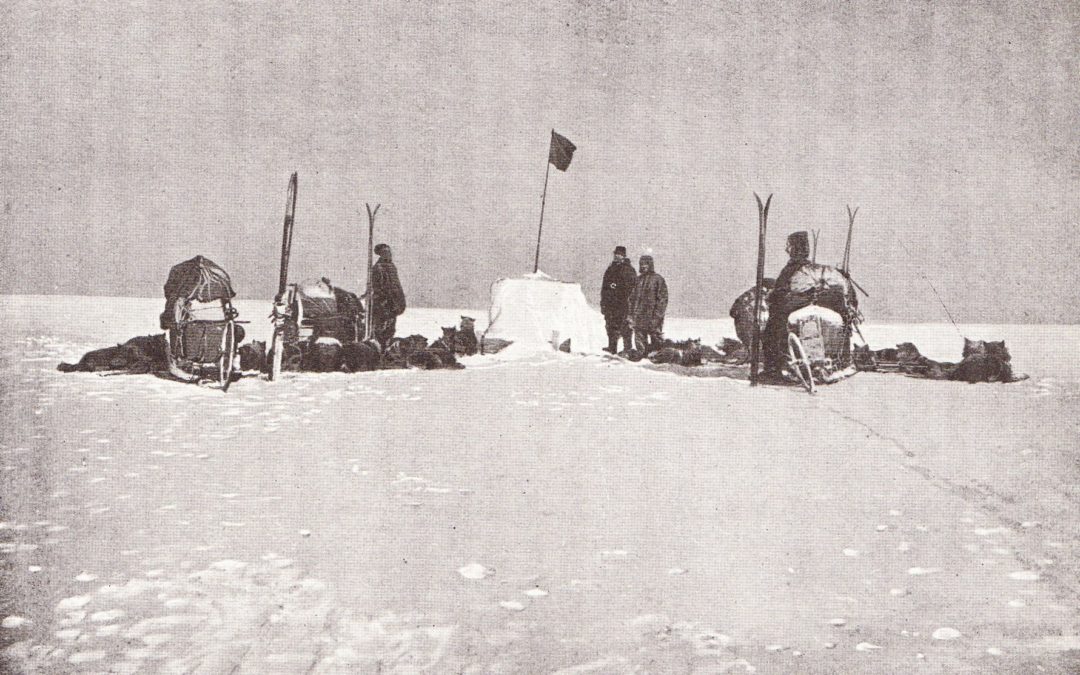“The whole difference between Amundsen’s dash to the South Pole—a picnic as he characterized it, and actually that relatively as Antarctic trips go—and Scott’s heroic struggle and tragic finish may be expressed in four letters, dogs.”
Nice. But I cannot confirm the source of Peary’s notion of Amundsen dash to the pole as a picnic. In a journal, Scott wrote, “Except for our tent, the camp routine is slack. Shall have to tell people that we are out on business, not picnicking.” If he wrote more, I’ve missed it. 
Aspley Cherry-Garrard, a member of Scott’s team, is more willing to contrast the difficulties of polar travel use with the pleasure of a picnic. At the start of his memoir, he writes: “A member of Campbell’s party tells me that the trenches at Ypres were a comparative picnic. But until somebody can evolve a standard of endurance, I am unable to see how it can be done. Take it all in all, I do not believe anybody on earth has a worse time than an Emperor penguin.” Later, Cheery-Gerrard reports, “Soon after we got in from Cape Crozier he heard that Scott was going over to the Western Mountains: somehow or other he persuaded Scott to take him, and they started with Seaman Evans and Simpson on September 15 on what Scott calls “a remarkably pleasant and instructive little spring journey,” and what Bowers called a jolly picnic.
This picnic started from the hut in a -40° temperature, dragging 180 lbs. per man, mainly composed of stores for the geological party of the summer.”
See Robert E. Peary. The Secrets of Polar Travel. New York: The Century Co., 1917. Capt. R.F. Scott. Scott’s Last Expedition: The Journal of Capt. R.F. Scott. New York, 1913; Apsley Cherry-Garrard. The Worst Journey in the World, Volumes 1 and 2. Antarctic 1910-1913. London: Constable & Co, 1922

